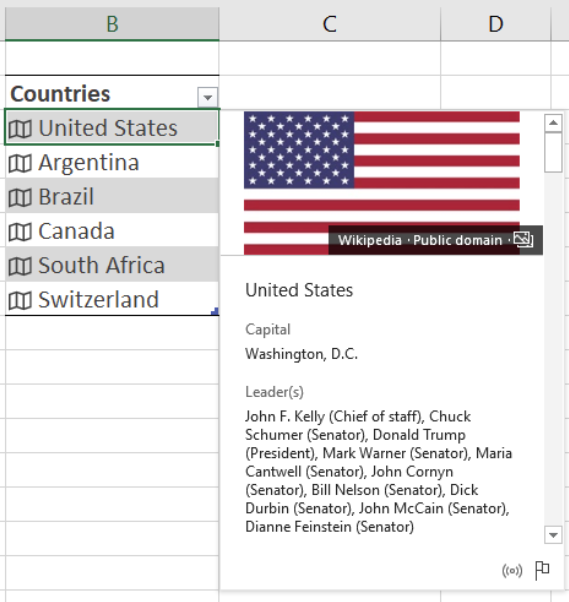Excel is the workhorse of many industries and if you love your spreadsheets, the following news will likely make you unreasonably happy: Excel is getting smarter, thanks to a fresh infusion of artificial intelligence. As we previously reported, the Excel team has spent the last few months adding new machine learning-powered features to the application and starting today, Office 365 users who opt in to the Office Insiders program will get to experience the first crop of these new features.
The general idea here is to make Excel smart enough to understand some of your entries and offer you additional information. For now, this applies to geographical data like the names of cities, states and countries (but also Zip codes), as well as stocks.

Say you have a list of towns in Oregon. Excel will recognize that these are towns in what is objectively the best state in the U.S. and then allows you to pull additional data from Microsoft’s Bing knowledge graph to work with (think population and other demographic data). Similarly, for stocks and index funds, Excel can now automatically pull in financial data about a company.
 Rob Howard, Microsoft director for Office 365, told me that the team decided to start with these two features because Excel users already tend to work with a lot of this data. “The really powerful thing about these new data types is that they are fundamentally new building blocks that we are introducing,” he said. “It’s another example of the places where we are taking AI and AI services to tools that people are already familiar with.”
Rob Howard, Microsoft director for Office 365, told me that the team decided to start with these two features because Excel users already tend to work with a lot of this data. “The really powerful thing about these new data types is that they are fundamentally new building blocks that we are introducing,” he said. “It’s another example of the places where we are taking AI and AI services to tools that people are already familiar with.”
The new feature sits in the Excel ‘Data’ tab, which now includes a new feature for transforming cells into these new data types. If Excel doesn’t quite know what to make of your data (Portland, ME or Portland, OR, for example), it’ll ask you to choose.
Howard wasn’t quite ready to talk about what data types the team is working on now, but he did say that one area the team is working on is integrations with internal data in a company. Every business has plenty of proprietary data that is typically hard to find and hard to use (and often sits in Excel sheets). The Microsoft Graph is the company’s effort to break this data out if its silos and the Excel team is looking for ways to bring it into spreadsheets, too.
The new version of Excel with support for these new data types is now available as a preview in Office 365 Insiders in English. It’ll roll out to all office 365 subscribers at some point in the future.
from TechCrunch https://ift.tt/2pO4Y6S
via IFTTT
Comments
Post a Comment